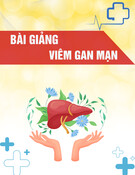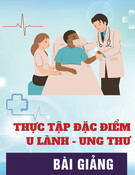
105
Journal of Medicine and Pharmacy, Volume 13, No.04, June-2023
Risk screening, nutrition assessment and associated factors of
malnutrition among elderly inpatients in Hue University of Medicine
and Pharmacy Hospital
Che Thi Len Len1*, Hoang Thi Bach Yen2, Nguyen Minh Tam1
(1) Family Medicine Center, University of Medicine and Pharmacy, Hue University
(2) Faculty of Public Health, University of Medicine and Pharmacy, Hue University
Abstract
Background: Undernutrition is a significant risk factor for mortality, complications, hospital infections,
length of hospital stay, quality of life, and prognosis. Patients with proper nutrition will help prevent
undernutrition, prevent the development of the disease, and improve the effectiveness of treatment. Nutrition
is an integral part of the comprehensive treatment process. Nutritional risk screening is one criterion that
shows the hospital’s nutritional care capacity. Assessing nutritional status plays an essential role in treating
and recovering health. This study aims (1) to screen and assess the nutritional status of inpatients aged from
60 years old in Hue University Medicine and Pharmacy Hospital and (2) to identify some factors related to
malnutrition. Methods: A cross-sectional study was carried out on 389 inpatients at two departments of
internal medicine, Hue University of Medicine and Pharmacy Hospital, from 11/2020 - 03/2021. We used the
mini nutritional assessment tool for screening nutrition risks. The subjective global assessment tool was used
to assess nutritional status and questionnaires to understand some related factors. Results: There were 68.9%
of patients at risk of malnutrition and 38.8% of patients had malnutrition. There were significant relationships
between the nutrition status of patients with re-admitted status (p < 0.05), including diseases (p < 0.05), oral
pathology (p < 0.05), decreased taste (p < 0.05)… Conclusion: The prevalence of inpatients with nutritional risk
in two departments of internal medicine was relatively high. It is necessary to conduct nutrition screening in
all inpatients to improve the effectiveness of treatment and comprehensive care.
Keywords: malnutrition, inpatients, nutrition treatment, subjective global assessment tool, mini nutritional
assessment tool.
Corresponding author: Che Thi Len Len, email: ctllen@huemed-univ.edu.vn
Recieved: 2/2/2023; Accepted: 15/5/2023; Published: 10/6/2023
1. INTRODUCTION
Eating, nutritional status, health, and disease
in an individual or population are all recognized
to be related. Additionally, insufficient nutrition
or a deficiency impacts a patient’s capacity to
recuperate from an illness or surgery. If the
patient has a diet full of nutrients suitable for
the disease, the effectiveness of treatment will
increase. A healthy diet can stop the progression
of the disease when it is still in the latent stage of
development. Malnutrition in patients is a factor
that significantly affects complications, hospital-
acquired infections, length of hospital stay, quality
of life, and disease prognosis. Older people will be
more severely affected by healing, higher mortality,
and expensive costs for individuals, families, and
society. A popular nutritional screening technique,
the primary nutritional assessment, is endorsed
and advised by national and international scientific
and clinical organizations to support older people.
The most frequently accepted and validated [1,
2]. The subjective global assessment is a measure
to evaluate patients’ nutritional status, commonly
utilized in international and Vietnamese clinical
nutrition research studies [3].
According to research by Kang M.C. et al.
(2018), hospitalized patients have a malnutrition
rate of 22.0% [4]. Patients at Quang Nam Central
General Hospital have a malnutrition rate of 26.1%,
according to research done by Dang Thi Hoang Khue
in 2019 [5]. In 2017, a study by Hoang Thi Bach Yen at
Hue University of Medicine and Pharmacy Hospital
revealed that 28.1% of patients were malnourished
and 37.4% were at risk for malnutrition [6]. In these
investigations, malnutrition was quite common
among hospitalized patients. Each patient needs
a pathologically appropriate diet and exercise
program to maintain excellent health and prevent
malnutrition. In an integrated treatment plan,
nutrition is crucial because it keeps the condition
stable, reduces complications, and shortens
hospital stays and overall care. To avoid the disease’s





















